QuestionQUESTION: Hello,
I purchased a 30 gallon tank for salt water fish a little over 2 months ago. My goal is to put seahorses in the tank after about 4-5 months. I currently have 2 damsels, 1 clown fish, a scooter blenny, 2 hermit crabs, 1 gorgonian, and a small bundle of java moss. I am using crushed coral for the bottom. I have a 200 bio-wheel power filter with a 200gph flow rate. Due to a nitrite problem I was advised to add another filter so I added a Trio3000 underwater filter with a 150gph flow rate. I have a low voltage LED lighting system (I cant find the exact specifications). The most recent water test I had done was about 2 weeks ago. The gravity is at about 1.024. The nitrite/nitrate levels in the past had been high, and now they have lowered greatly (not completely at 0 yet). The only issue in the water was that the PH level was at 8.0. About 2 weeks ago I decided to add a small sea anemone (3 inces in diameter when open). When I bought it, it came with a 1/2 pound live rock and a feather duster worm (I think the worm is dead now). To feed the live rock/anemone I put in Eco Strontium Marine Essential Reef Supplement once a week. About a week ago (1 week after I added the anemone/live rock) I noticed that there were random brown blotches forming around the live rock. A few days after I noticed little brownish-red hairs growing from these blotches (I'm assuming it is algae). I called the pet store to see if I should be worrying about this, and they said that it shouldn't be an issue. I am a very cautious person and just to be safe, I need a second opinion. Will this algae growth be harmful to the seahorses I put in approx. 2-3 months from now? If I need to get rid of it, is there some sort of bottom feeder/crustacean I can get to eat the algae that wont cause an issue to the fish I already have?
Thanks!
ANSWER: Hi Mitch,
You have Cyanobacteria. Yes. Extremely harmful.
It comes from a combination of things.
Poor filtration - Your filters are sub-standard for a 30 gallon saltwater tank. It sounds as if you want to make this a reef. Might I suggest you upgrade to a 350 marineland HOB instead of what you have, and remove ALL charcoal from the system. Charcoal promotes growth of cyano.
No skimmer - When we have fish, we need to skim our tanks.
Tap water - Please buy R/O water and use that instead of well or tap water. That water has too many nutrients and causes cyano. When combined with poor flow, this is why you have the issues you have.
Flow - We need to increase flow drastically. I recommend 2 powerheads. In the wild, flow is huge in saltwater reefs. We're looking about around 1000 gph, ontop of your filter. I'd add 2 powerheads. Koralia 425GPH are recommended. One on each end, facing each other. Combine them alongside your 350Marineland. Your fish and corals will drastically improve.
What it boils down to is the system is on the verge of a breakdown. That is because the filtration is so poor and there is no skimming and all the above is a combination for a tank breakdown in the near future.
Yes, cyano is very dangerous to both fishes and to corals.
It needs to be siphoned out. Water changes need to resume at a normal rate of 10% every week, and if you only do every other week, 25%.
If you don't own an R/O unit, go to your local store and purchase it by going to a water refill station using a 5 gallon blue bottle and it's like $1.50. Worth it, in my opinion.
There are no inverts which eat this algae.
Please write if you need to.:)
Happy fish-keeping.
---------- FOLLOW-UP ----------
QUESTION: Thank you, I'm glad I asked a second opinion. Like I said, I had previous issues with poor filtration in the past, and I was told that I wouldnt have to worry about it again if I bought the Trio3000. I am worried about increasing the flow because most seahorses need a very slow flow rate, and the seahorse experts say no more than 200gph.
I did a little bit of research and it said that I would first off remove the bacteria completely. Then it says to skim frequently and bump up weekly water changes to about 15%-20% to remove extra phosphate. It also says to turn off the light and keep it off for a few weeks. Lastly, it says to feed my fish less. Basically it is saying to starve the bacteria. Is this a good method?
ANSWER: Feed fishes less, only one time a day. Only what they eat. This is a lifetime ritual, not just for right now.
Yes, seahorses require slower flow, but you are going to continue getting cyanobacteria as long as you continue using tap water and indeed, it is deadly.
The skimming is very important especially with seahorses.
Water changes should be weekly anyway. Bi-weekly at least. How often have you been changing water?
10% every weekend.
Turning off the light will only stop the growth, but the bacteria will still be in there. Moment it comes back on, voilla...more cyano. You have to literally suck the cyano out with a tube. Try to get every drop of it.
Happy fish-keeping. :)
---------- FOLLOW-UP ----------
QUESTION: I was actually changing my water only 1 time a month. But every time I changed it I changed at LEAST 40%. I am still learning, so it won't be a mistake I make again.
I called the pet store today and I told them about the situation. I went over there with a water sample to get tested. Once again everything was perfect except the PH was 8.0 still. We discussed my options for fixing the tank. He said that he was currently dealing with a cyano problem with his own tank at home. He told me that he has been taking about a quarter inch of coral off the bottom every week, putting it in a bucket with the same gravity/temperature as his tank, cleaning it, and then putting it in a different bucket with the same gravity/temperature and rinsing it out. He does this with his live rock as well. I also got 1 Koralia circulation pump. The one I got has a 550 gph flow rate. I put it near the top of the tank facing up to give it a nice stir. I plan on getting a skimmer in the near future with a UV light in it (at least I think that's the type of light it was) to help kill the phosphate.
When I came home, there was an unpleasant surprise waiting for me. My scooter blenny had died. Before I left it was alive and it was dead right when I got home. I just finished following the instructions for cleaning my tank and hopefully I don't experience any more casualties along the way.
Do you know by chance how much cyano affects gorgonian and if I should be worried about its health?
Thanks!!
AnswerHi Mitch,
Petstore personnel are rarely real fish or reef experts, although they may have had them awhile. I caution you against taking advice from the pet store.
PH will not cause a rise in phosphates. The two are un-related.
Use R/O water. It will probably completely cure your issue within about a month. The old water will have to circulate out. Cyano is extremely invasive when using tap water. Why? Because tap water contains silicates. Silicates? Silicates! Why? Well, tap water contains silicates to keep our water cleaner. The silicates oxygenate, but they also cause cyanobacteria and when combined with detergents in the tap water, it makes things worse. Even dechlorinated water will contain silicates and detergents.
The petstore person probably uses tap water also.
Vacuuming up the top quarter inch is recommended.
I had cyano sooooooo bad back when I first started with reef tanks. I went to multiple stores. Many. I got advice from so many so-called epxerts and not one of them told me the cure was as simple as using R/O water, doing regular water changes, lowering the temperature to 76 (in the wild, it's only 76, not 80 as some recommend), and just staying ontop of it. You can additionally add Phosban to a net and it will help tremendously when combined with the rest.
I do hope it helps.
Cyano will affect your gorgonian. Its skin will fall off with time. This is what is known as a corrosive bacteria. It's not a beneficial reef issue by any means. I would begin skimming asap. I wish I hadn't just got rid of my skimmer...it was an extra. I'd offer it to you. :(
Happy reef-keeping.

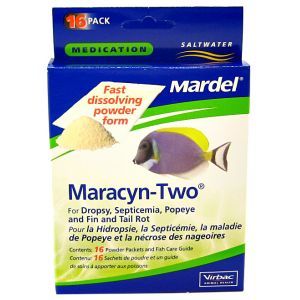 my clownfish have white nungus
Questionhi had 4 clown fish and two died they are havin
my clownfish have white nungus
Questionhi had 4 clown fish and two died they are havin
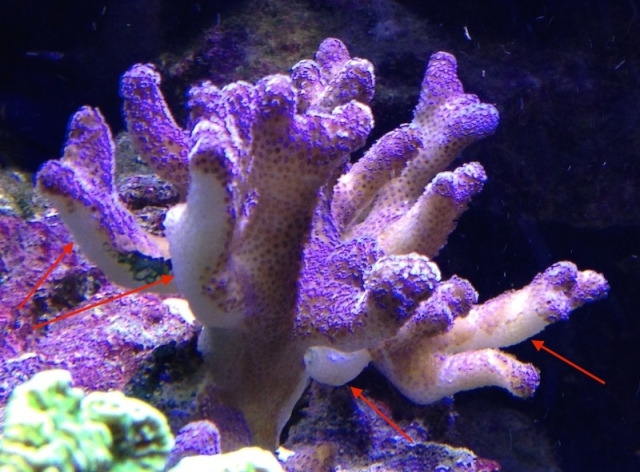 Problem with SPS
Question
Coral Coral placement
I have an S
Problem with SPS
Question
Coral Coral placement
I have an S
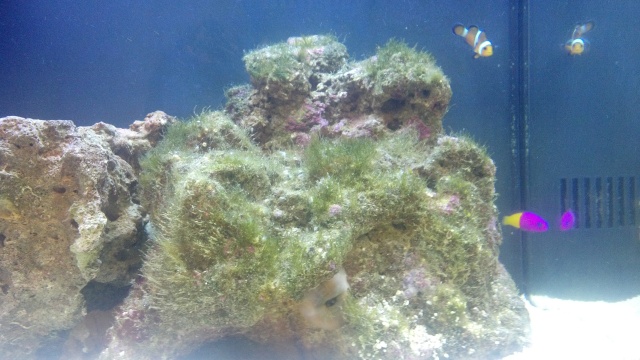 Grass-Like Algae
Question
Algae on live rock
Hello,
Grass-Like Algae
Question
Algae on live rock
Hello,
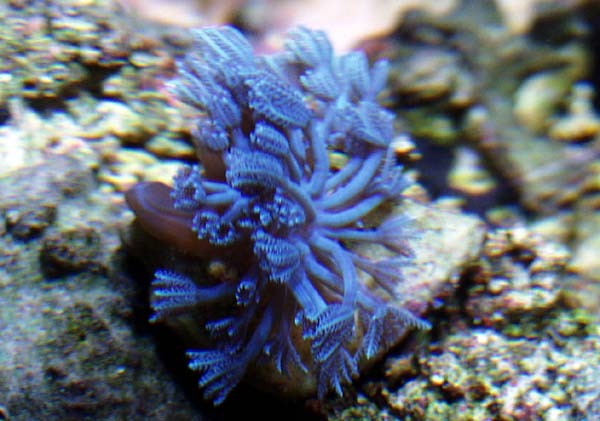 First timer
QuestionQUESTION: Hello Mr. Francis, I just bought a 14
First timer
QuestionQUESTION: Hello Mr. Francis, I just bought a 14
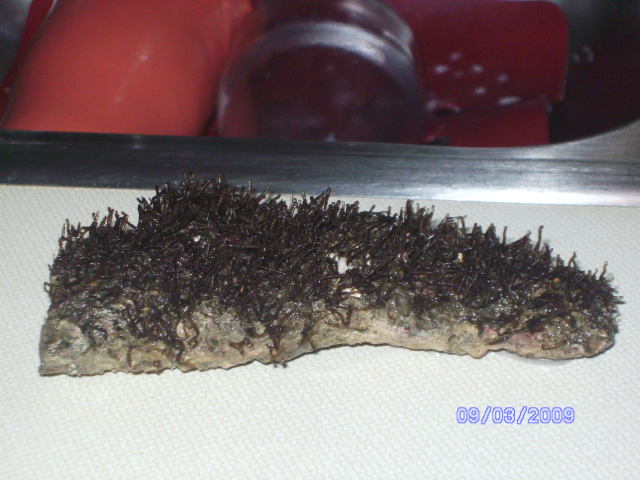 Something on my live rock
Questionlive rock
QUESTION: Can you identify thi
Something on my live rock
Questionlive rock
QUESTION: Can you identify thi